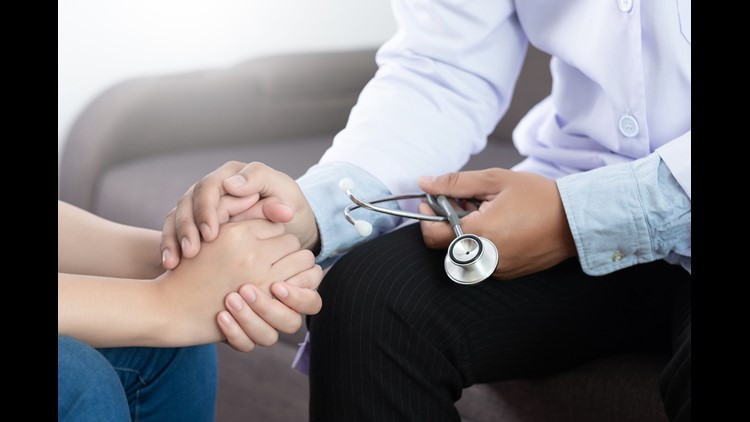HARTFORD -- David Rhoads said ironically his golf game got better after he was diagnosed with Parkinson’s disease.
“I find that when I’m addressing the ball, I go totally no shake, because there’s a total focus on that,” he said.
Like many Parkinson’s patients, David finds that his tremors often diminish during a task that requires focus, like swinging a golf club.
However, those tremors become more pronounced when his muscles are at rest, or doing actions that we typically do unconsciously, like walking. He also said that attacks, or what he calls “off-periods,” can come seemingly out of nowhere, and greatly hamper his ability to get around, and even communicate.
“Sometimes, I get where I can’t even talk correctly, and it’s scary,” Rhoads said.
Also like many Parkinson’s patients, David’s medications worked only intermittently.
“Tremors sometimes respond well to medication and sometimes just don’t respond very well to the medication,” said Dr. Adam Simmons of the Hospital for Special Care, in New Britain, where David gets much of his therapy.
As part of his therapy, David was judged to be a good candidate for a type of therapy called Deep Brain Stimulation, or DBS. It involved drilling a small hole into the skull, into which an electrode with four to six contact points can be placed at various points directly on the brain.
Doctors can then remotely control the frequencies and polarization of the signal those electrodes emit. It’s designed to be used in conjunction with medication, because many symptoms of Parkinson’s that don’t respond at all to medication will not respond to DBS either, with tremor being one noticeable exception.
Dr. Simmons said DBS acts as sort-of a white noise generator for the brain.
“We think that the electrodes actually work by blocking the signals that come from these overactive areas of the brain,” he said.
The electrodes are powered by a small stimulator implanted under the skin, near the collarbone. Dr. Simmons said the batteries can be replaced every 3 to 5 years, or they can use a rechargeable battery, allowing it to stay under the skin. Dr. Simmons said those need to be replaced every 15 years. The signals can be controlled and manipulated through a small hand-held device that is placed near the battery, but outside the skin.
Its effects are immediately and unmistakably noticeable. In a demonstration, Dr. Simmons shut off David’s DBS stimulator, and David’s hands and feet went from a slight tremble to full-on shaking within 35 seconds.
His voice slurred as well – speech being another of those automatic movements that get affected by Parkinson’s. The improvements were just as sudden when Dr. Simmons turned the DBS stimulator back on. Within 15 seconds, David’s shaking returned to normal, and his speech stopped slurring.
“The procedure is very safe and it really can be extremely helpful for a lot of people,” said Dr. Simmons. He said, when combined with medication and the multi-disciplinary approach to rehabilitation that the Hospital for Special Care takes, the results can be life-changing.
“What really sets our program apart is our multi-disciplinary approach, where we work very closely with speech therapy, with physical therapy, with occupational therapy,” Dr. Simmons said, “and we are able to provide it all under one roof, here, which is really very nice.”
“I believe I’m going to have an extra ten to fifteen years because of my wife and my doctor,” Rhoads said, choking up momentarily, “they make a tremendous difference.”



